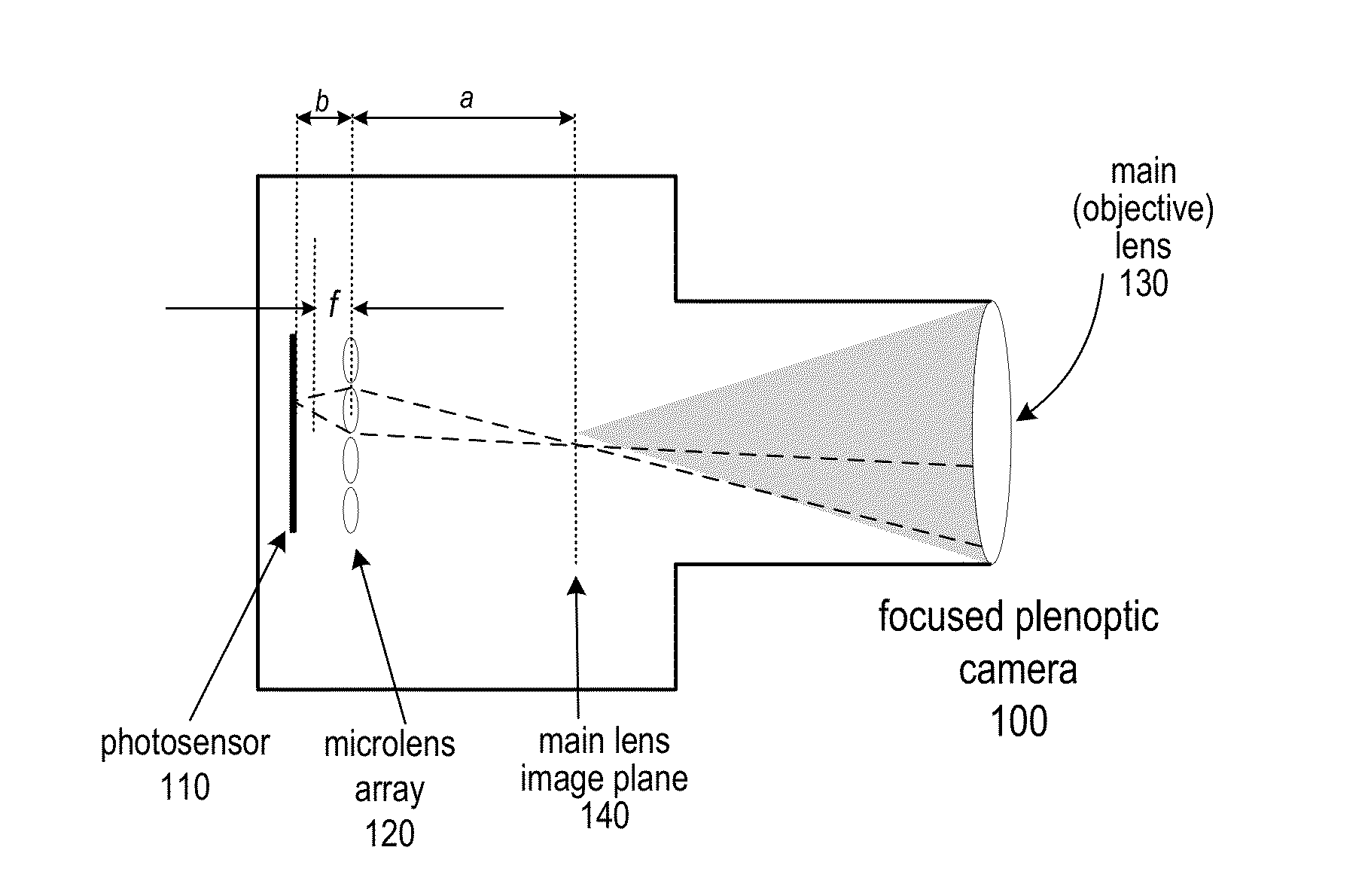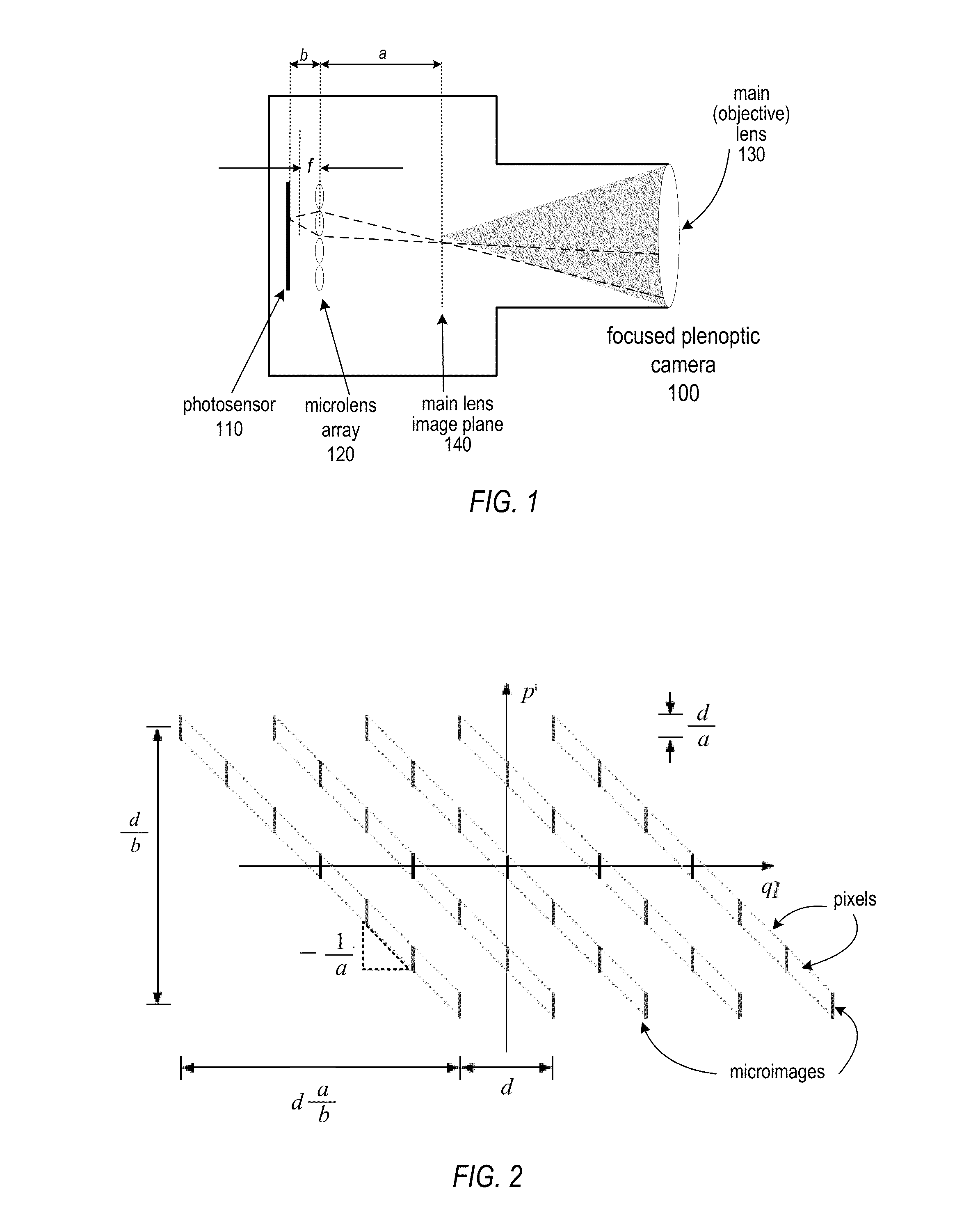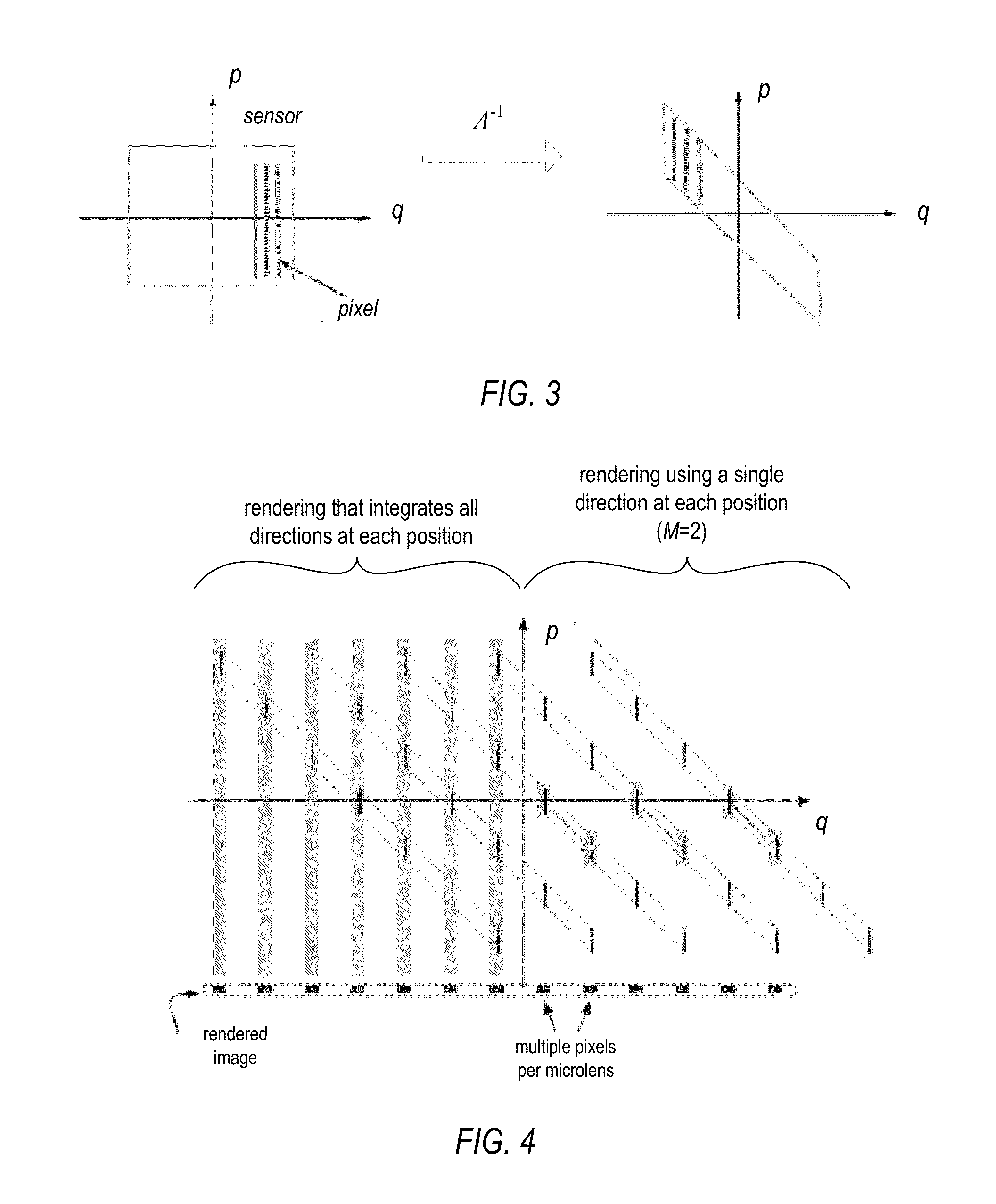Methods, Apparatus, and Computer-Readable Storage Media for Blended Rendering of Focused Plenoptic Camera Data
a technology blended rendering, which is applied in the field of methods, apparatus and computer-readable storage media for blended rendering of focused plenoptic camera data, can solve the problems of low resolution and relatively low resolution of images rendered from data captured using conventional plenoptic camera, and achieve the effect of higher resolution
- Summary
- Abstract
- Description
- Claims
- Application Information
AI Technical Summary
Benefits of technology
Problems solved by technology
Method used
Image
Examples
example depth
-Based Rendering Algorithm
[0096]In at least some embodiments, to render the final image using depth information, the basic rendering algorithm that was previously described may be modified so that, rather than using a fixed pitch value, the value for the given microlens is looked up in the pitch array. In at least some embodiments, the depth-based rendering algorithm may be performed at least in part on parallel computing architectures, for example the architectures of GPU platforms, multi-core or multi-processor platforms, and so on. An example GLSL implementation of the depth-based rendering algorithm that may be used in at least some embodiments is given below. Note that this code renders one point in the output image, and may be performed in parallel to render multiple points in the output image simultaneously. Note that this code is given as an example, and is not intended to be limiting. Any suitable GPU programming language and tools may be used to implement embodiments of th...
example rendering
with Blending Algorithm
[0108]To realize the integration over p in equation (4), i.e., over multiple views, the same spatial point may be averaged together (blended) across microlens images. For microlenses spaced μ apart and a patch size of M, the pixels that need to be averaged together to render a given pixel in the rendered image will be distance (μ−M) apart. That is, all pixels at position f(x) are averaged, where:
fi(x)=pi+q′where(F1)pi=⌊xμ⌋+i(μ-M)(F2)
for i= . . . , −2, −1, 0, 1, 2, . . . and q′ is given by equation (C3):
q′=q+μ-M2=(xμ-p)M+μ-M2.(C3)
[0109]Since μ is constant, this means that for images generated with a given sampling pitch M there is a fixed upper bound, Um, for the absolute value of i, namely
lim=(⌊μM⌋-12)(F3)
[0110]In addition, in at least some embodiments the contribution from different views may be weighted to perform weighted blending. To accomplish weighted blending within GLSL implementations, another texture (single-component, in this case) may be as a looku...
example implementations
of Rendering Methods
[0119]Embodiments of the full-resolution rendering techniques as described herein may be performed by a rendering module implemented by program instructions stored in a computer-readable storage medium and executable by one or more processors (e.g., one or more CPUs or GPUs) of a computer system or other device. FIG. 21 illustrates a full-resolution rendering module rendering images from a flat captured, for example, by various embodiments of a focused plenoptic camera. Rendering module 920 may, for example, implement a basic full resolution rendering technique, a depth-based rendering technique, a rendering with blending technique, and / or a combined depth-based rendering and rendering with blending technique for rendering full-resolution images from flats captured using focused plenoptic cameras, as described herein. FIG. 22 illustrates an example computer system on which embodiments of rendering module 920 may be implemented. FIG. 20 illustrates an example user...
PUM
 Login to View More
Login to View More Abstract
Description
Claims
Application Information
 Login to View More
Login to View More - R&D
- Intellectual Property
- Life Sciences
- Materials
- Tech Scout
- Unparalleled Data Quality
- Higher Quality Content
- 60% Fewer Hallucinations
Browse by: Latest US Patents, China's latest patents, Technical Efficacy Thesaurus, Application Domain, Technology Topic, Popular Technical Reports.
© 2025 PatSnap. All rights reserved.Legal|Privacy policy|Modern Slavery Act Transparency Statement|Sitemap|About US| Contact US: help@patsnap.com



